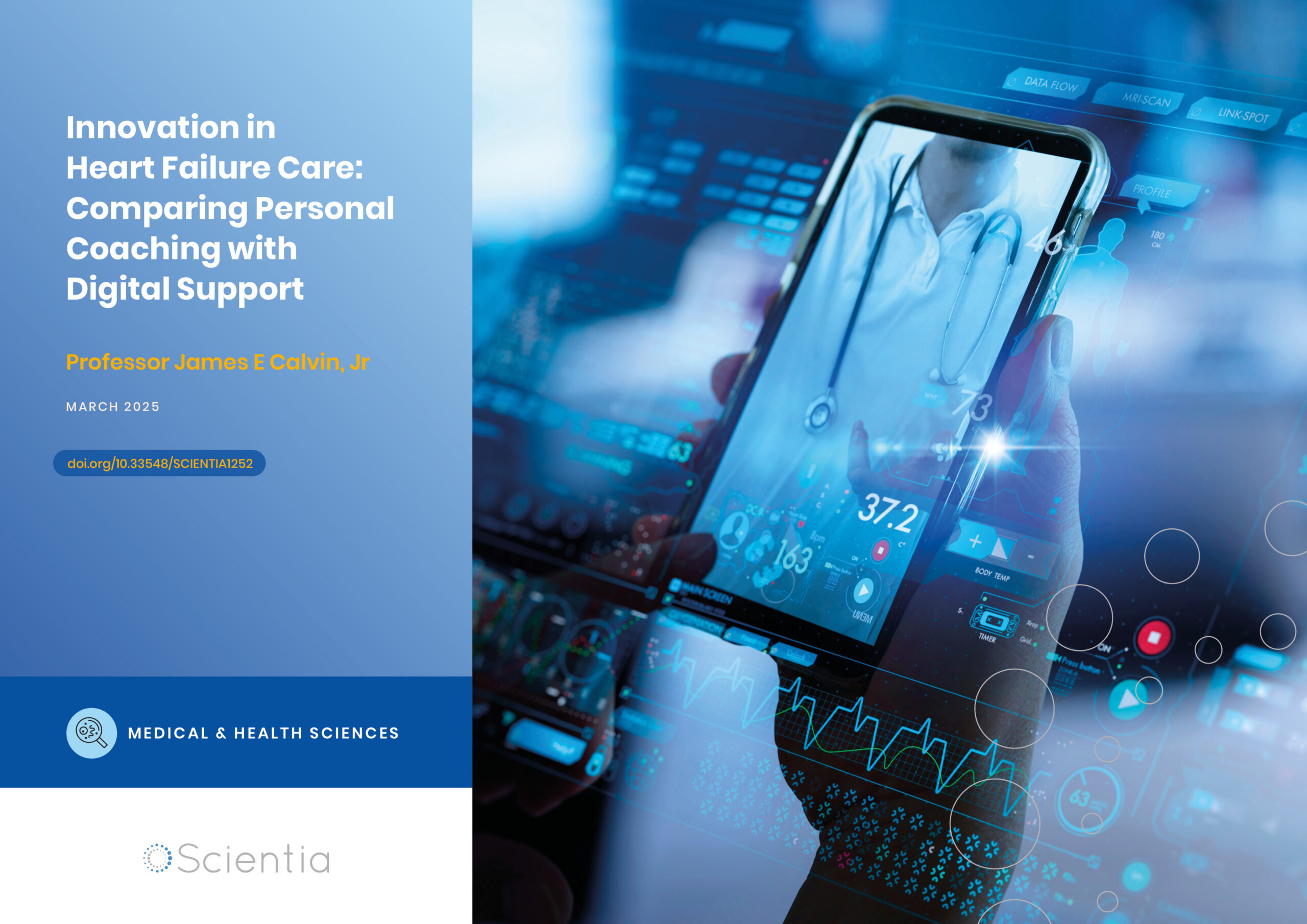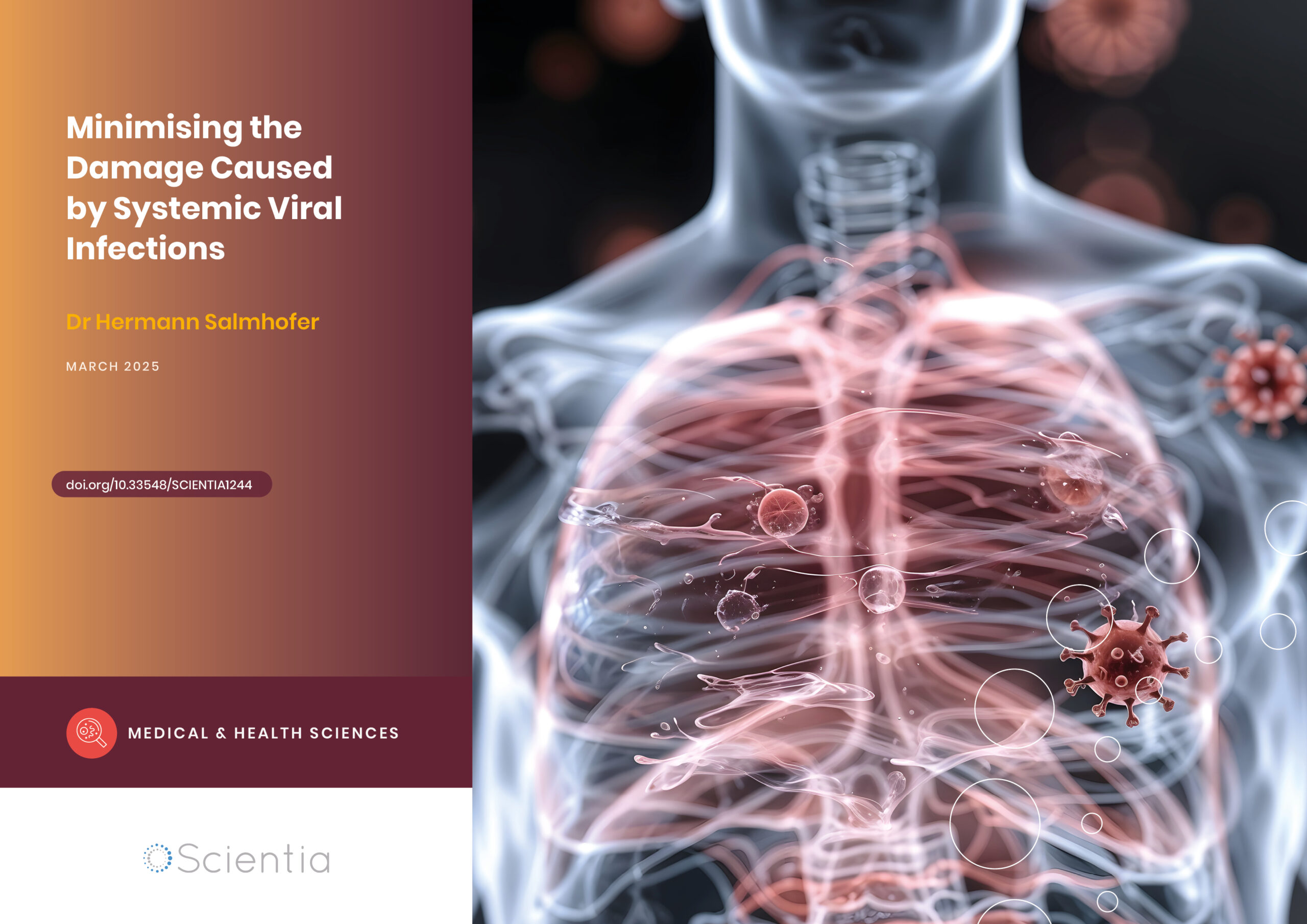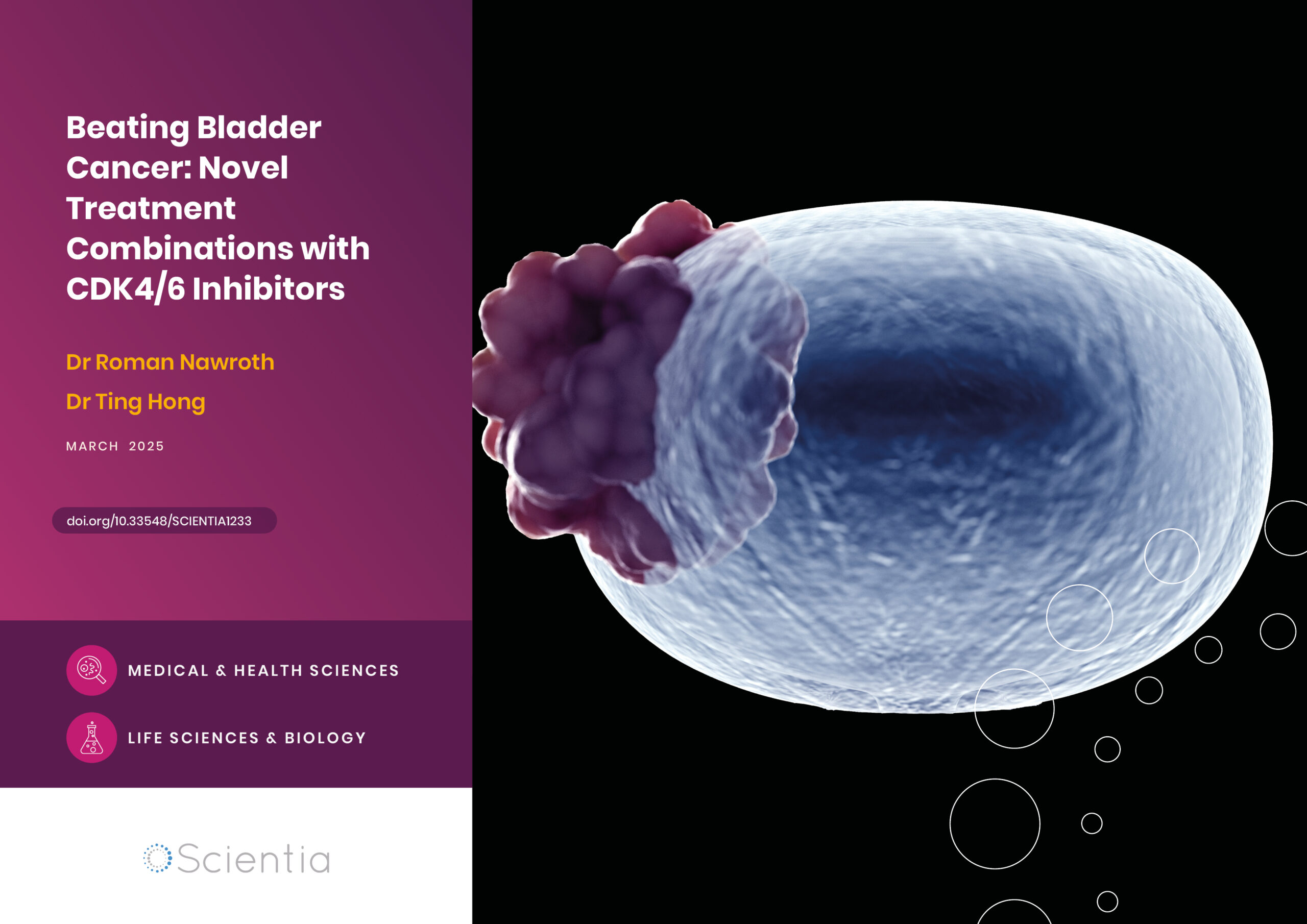Dr Helen Marsden | DERM: A Novel Device to Detect Skin Cancer
Skin cancer affects millions around the world and is among the most commonly occurring cancers. This global impact leads to an ever-growing demand for dermatology capacity, which is simply not available. Given that skin cancer can be treatable with high rates of survival when detected early, technology interventions are required to address the gap between demand and capacity. Dr Helen Marsden conducts vital research at Skin Analytics Ltd to demonstrate how AI can allow dermatology teams to discharge benign lesions earlier in the pathway and help prioritise patients who need to be seen or receive treatment.
Skin Cancer on the Rise
According to the World Health Organization, the cases of skin cancer have increased over the last few decades, meaning that skin cancer now accounts for one in every three cancers diagnosed. The main types are non-melanoma and melanoma, with around 3 million cases of the more common non-melanoma skin cancer (NMSC) occurring globally every year. Around 17,000 cases of melanoma and 156,000 cases of NMSC are diagnosed in the UK each year, resulting in over 4,000 deaths from skin cancer annually.
As for any cancer, an early diagnosis is critical so treatments can start as soon as possible before the cancer spreads to other parts of the body where it can be more challenging to fight. To help speed up the diagnosis process and minimise any delays, Skin Analytics Ltd in London have developed a revolutionary artificial intelligence (AI) as a medical device called DERM, which stands for Deep Ensemble for the Recognition of Malignancy.
Early Detection is Key
Dr Helen Marsden, Clinical Research Director at Skin Analytics Ltd, says that although NMSCs make up the majority of skin cancer cases, melanoma presents a significantly higher risk of death due to its propensity for metastasis, spreading to other areas of the body. Early detection is crucial as swift identification of melanoma vastly enhances survival rates. The appearance of a new mole or changes to an existing mole, such as alterations to its shape, size, and colour, could be signs of cancer, so these ‘suspicious’ moles have to be reviewed as quickly as possible. She explains that in the UK, there is a dedicated Urgent Suspected Cancer pathway where primary care providers can refer suspicious moles and lesions for a timely diagnosis by a dermatologist.
Dr Marsden highlights that the pathway has witnessed a significant growth in referral numbers from 332,000 in 2015/16 to over a staggering 650,000 in 2023. However, 94–96% of urgent referrals are not high-risk cancers, and most turn out to be benign. This vast increase in referrals has resulted in a decreased percentage of patients actually being seen and diagnosed within the 28-day target in line with the new Faster Diagnostic Standard. She explains that time is wasted with unnecessary referrals, leading to delays in catching and managing more serious problems, adding that there is a desperate need to improve the diagnostic accuracy of suspicious lesions much earlier in the process.
Novel Device: DERM
Skin Analytics’ ground-breaking work in the area of image recognition has led to the development of DERM. This new digital health technology is a UKCA-marked Class IIa medical device, which features an AI algorithm (AIaMD) that analyses images of skin lesions taken using a dermoscope, a specialist device used to examine the skin. It can determine the presence of melanoma and non-melanoma skin cancers with comparable accuracy to that of skin cancer specialists.
The AIaMD has been thoroughly trained and tested using dermoscopic images of lesions that have already been confirmed with a diagnosis. A wide range of both malignant and non-malignant lesion images were used, as well as a multitude of lesion and cancer subtypes, such as basal cell carcinoma, squamous cell carcinoma, and pre-cancerous lesions. It was also trained to detect various benign conditions, for example, actinic keratosis and seborrheic keratosis, offering additional information to assist clinicians in identifying skin cancers from harmless lesions.

The DERM-003 Study
Dr Marsden and her colleagues put their new technology to the test in the DERM-003 study. They photographed suspicious skin lesions using three different smartphone models (iPhone 6S, iPhone 11 and Samsung 10) with a dermoscopic lens attachment. These lesions were then reviewed by dermatologists, who provided their clinical diagnoses. Histology results were obtained for lesions that were biopsied. This is when the lesion is removed and analysed under a microscope to determine if it is cancerous. The smartphone images were assessed by the AIaMD and then compared to the clinical and histologic diagnoses. A staggering 611 images of suspicious lesions from 572 patients were reviewed.
Dr Marsden highlights that 100% of the lesions diagnosed as melanoma were correctly classified by the AIaMD, confirming their work with earlier versions of the technology, which focused only on identifying this more aggressive form of skin cancer. She explains that the new version of their software, which was being tested in the DERM-003 study, had been updated to also identify NMSCs, squamous cell carcinomas and basal cell carcinomas, and also a number of pre-cancerous, atypical, and benign skin lesions that are often mistaken for being cancer. She explains that the AIaMD was able to classify these lesions to a high degree of sensitivity and specificity, comparable to that of dermatologists, concluding that the technology has the potential to provide dermatologist-level assessment of suspicious skin lesions earlier in the patient pathway.
A Direct Comparison
In their most recent research paper (DERM-005), Dr Marsden and her colleagues further examined whether their AIaMD could reduce the number of unnecessary referrals and biopsies as compared to the standard teledermatology service while still achieving a sensitivity to detect skin cancer at a comparable level to clinicians.
Dr Marsden and her team recruited patients referred to a teledermatology cancer pathway and, like the previous DERM-003 study, used smartphones with a dermoscopic lens attachment to capture images of the lesions, which were then assessed by the AIaMD and a consultant dermatologist. In total, 622 patients presenting with 789 lesions were reviewed. The team reported that their AIaMD had a significantly higher rate of identifying lesions that did not require urgent referral or biopsy compared to the teledermatology clinic while maintaining comparable levels of sensitivity for detecting skin cancers.
In the Real World
Examining how well DERM performs in the real world is also vital. DERM has been deployed in the NHS (in the UK) since April 2020, and its performance in clinical practice is continually monitored. Data collected at two hospitals between July 2021 and October 2022 has been used to demonstrate the performance of DERM in clinical practice. A total of 14,500 cases of patients aged between 18 and 100 years old, with a variety of skin types, were reviewed. Two versions of DERM software were used, initially DERM-vA and then DERM-vB, resulting in a total of 8,571 skin lesions being examined.
Both DERM-vA and DERM-vB performed extremely well, demonstrating very high sensitivity for detecting melanoma and other skin cancers, while DERM-vB was better at identifying benign lesions. Dr Marsden’s colleagues, who ran the analysis, highlight that DERM-vB correctly referred all skin cancers and was found to have a specificity greater than the previous DERM-vA software version. Dr Marsden adds that when evaluating new technology in the real world, there is often a gap in performance from what is seen in clinical research, but this has not been seen with DERM. Thus, this technology can be safely deployed in clinics where patients of all ages and skin types are assessed whilst still maintaining the sensitivity and specificity demonstrated in earlier pre-marketing studies.

Welcomed by Patients
Dr Marsden highlights that the need for AI in healthcare is increasing rapidly. In the field of dermatology, there has been a rise in skin cancer referrals over recent years, compounded by staff shortages and, of course, the disruption caused by COVID-19. Clinics are faced with a backlog. AIaMD offers a much-needed solution to these problems – but what do patients think? There is currently little information regarding patients’ perspectives on the use of AIaMD in healthcare. Dr Marsden stresses that if technologies like DERM are to be successfully incorporated into healthcare processes, it is crucial that patients are willing to use it and feel assured that its deployment is safe, legal, and ethical.
Dr Marsden and her team investigated patients’ views about AIaMD and the use of DERM in the skin cancer two-week wait pathway by asking patients to complete an online questionnaire. Between February 2020 and August 2021, they received 268 responses, finding that, overall, patients felt positive about the use of the AIaMD. The majority of the respondents felt confident with technology being utilised to assist doctors with diagnoses and creating management plans, as well as a support tool for GPs in primary care when they are assessing skin lesions. Most also felt comfortable having photographs of their lesions taken with a smartphone.
The Future of DERM
DERM has been confirmed to detect skin cancers with comparable accuracy to dermatologists in different clinical environments, including clinical studies and real-world deployments of the technology, and it can be safely deployed in clinics where patients of all ages and skin types are assessed. Dr Marsden concludes that the use of AI also has the potential to significantly reduce the number of unnecessary referrals, thereby lightening the burden on already stretched health services.
In addition, Dr Marsden highlights that the majority of patients report that they are comfortable with AI being used as part of the assessment of their skin lesions, especially when it means they can be assessed much sooner. She adds that, to the best of her knowledge, their investigation evaluating patient’s perspectives on AIaMD use in skin cancer pathways in the UK was the first of its kind. Certainly, the work by Dr Marsden and the rest of the team at Skin Analytics is revolutionising the way healthcare is delivered, streamlining the critical process of skin cancer diagnosis.
Closing paragraph and CTA
The team at Skin Analytics are really proud to pioneer a market-leading approach to performance monitoring and continual improvement for AI. They’re committed to providing a technology that delivers real-world clinical value and being completely transparent about their results.
All of this work is in pursuit of driving patient outcomes and building a world where no one dies from skin cancer.
Learn more at skin-analytics.com/performance/
SHARE
DOWNLOAD E-BOOK
REFERENCE
https://doi.org/10.33548/SCIENTIA1101
MEET THE RESEARCHER

Dr Helen Marsden
Smithfield Business Centre,
Second Floor,
5 St John’s Lane,
London,
EC1M 4BH, UK
Dr Helen Marsden obtained her BSc and PhD in Medical Microbiology from the University of Leeds in the UK. She is currently the Clinical Research Director and Data Protection Officer at Skin Analytics Ltd in London. She is also the Director and Co-founder of HI-Ventures, a clinical research consultancy. For over two decades, Dr Marsden has worked in the medical science and clinical research fields for academic institutes, start-up MedTech businesses and large pharmaceutical companies, including GlaxoSmithKline and Merck KGaA. Most of her work has focused on producing clinical and scientific data to support the commercial deployment of medical devices and medicines in areas such as dermatology, oncology, HIV and respiratory therapy. She has significant experience in all aspects of evidence generation, from the strategic inception of clinical research programmes to authoring publications of study results and carrying out clinical evaluation activities.
CONTACT
E: helen@skinanalytics.co.uk
W: https://skin-analytics.com/
X: linkedin.com/in/helen-marsden-5b987756
KEY COLLABORATORS
Dr Jack Greenhalgh, Head of AI; Dr Dan Mullarkey, Medical Director; Dr Marcello Venzi, Senior ML researcher; Dr Dilraj Kalsi, Clinical AI Lead; and Dr Polychronis Kemos, Statistician at Skin Analytics Ltd
Dr Lucy Thomas, Consultant dermatologist at Chelsea and Westminster Hospital NHS Foundation Trust; Dr Ioulios Palamaras, Consultant dermatologist at Royal Free London NHS Foundation Trust; Dr Anusuya Kawsar, Consultant dermatologist at Chelsea and Westminster Hospital NHS Foundation Trust; Prof Chris Hyde, Professor of Public Health and Clinical Epidemiology at the University of Exeter and all other cited authors.
FUNDING
The DERM-003 and DERM-005 studies were partly funded through a BioMedical Catalyst grant from InnovateUK.
FURTHER READING
H Marsden, C Kemos, M Venzi, et al., Accuracy of an Artificial Intelligence as a medical device as part of a UK-based skin cancer teledermatology service, Frontiers in Medicine, 2024, 11. DOI: https://doi.org/10.3389/fmed.2024.1302363
A Kawsar, K Hussain, D Kalsi, et al., Patient perspectives of artificial intelligence as a medical device in a skin cancer pathway, Frontiers in Medicine, 2023, 10, 1259595. DOI: https://doi.org/10.3389/fmed.2023.1259595
L Thomas, C Hyde, D Mullarkey, et al., Real-world post-deployment performance of a novel machine learning-based digital health technology for skin lesion assessment and suggestions for post-market surveillance, Frontiers in Medicine, 2023, 10, 1264846. DOI: https://doi.org/10.3389/fmed.2023.1264846
H Marsden, C Morgan, S Austin, et al., Effectiveness of an image analyzing AI-based Digital Health Technology to identify Non-Melanoma Skin Cancer and other skin lesions: results of the DERM-003 study, Frontiers in Medicine, 2023, 10, 1288521. DOI: https://doi.org/10.3389/fmed.2023.1288521
REPUBLISH OUR ARTICLES
We encourage all formats of sharing and republishing of our articles. Whether you want to host on your website, publication or blog, we welcome this. Find out more
Creative Commons Licence (CC BY 4.0)
This work is licensed under a Creative Commons Attribution 4.0 International License. 
What does this mean?
Share: You can copy and redistribute the material in any medium or format
Adapt: You can change, and build upon the material for any purpose, even commercially.
Credit: You must give appropriate credit, provide a link to the license, and indicate if changes were made.
SUBSCRIBE NOW
Follow Us
MORE ARTICLES YOU MAY LIKE
Professor James Calvin | Innovation in Heart Failure Care: Comparing Personal Coaching with Digital Support
Heart failure remains one of the most challenging conditions facing healthcare systems today, with hundreds of thousands of new cases diagnosed annually. Professor James Calvin from Western University’s Schulich School of Medicine and Dentistry has led groundbreaking research comparing two innovative approaches to supporting patients: personal health coaches and smartphone reminders. His team’s findings suggest that combining human support with digital technology could transform how we help patients manage this complex condition.
Dr Hermann Salmhofer | Minimising the Damage Caused by Systemic Viral Infections
The mechanisms via which viral diseases infect and progress within the human body have become the subject of intense scrutiny since the emergence of the serious respiratory condition COVID-19, although many other viruses remain woefully under-researched. Recently, Dr Hermann Salmhofer and colleagues at the Paracelsus Medical University in Salzburg, Austria, have described the successful treatment of a harmful systemic virus affecting the kidneys, and suggest a possible new treatment target to mitigate the progression of the disease and prevent the development of permanent organ damage. Their findings, combined with broader research on viral infections, highlight the critical importance of both preventive measures and targeted treatments in managing viral diseases.
Revealing the Intricate Links Between Metabolism and Reproduction
The brain plays a vital role in controlling reproductive functions. It helps to maintain a delicate balance of hormones, all of which can be affected by the metabolism. Investigating the impact of the metabolism on reproductive development and function is critical to a better understanding of health and diseases. Professor Carol Fuzeti Elias and Dr Cristina Sáenz de Miera Patín from the University of Michigan in the USA, carry out groundbreaking research in neuroscience, exploring the molecular and neural mechanisms at play.
Beating Bladder Cancer: Novel Treatment Combinations with CDK4/6 Inhibitors
Cancer is one of the leading causes of death around the world. Research into this disease is vital to the development of new treatments, bringing fresh hopes to those affected by this potentially devastating diagnosis. Dr Roman Nawroth and Dr Ting Hong carry out their ground-breaking research at the Technical University of Munich in Germany. They focus their efforts on novel approaches to fight bladder cancer, exploring the use of CDK4/6 inhibitors.





